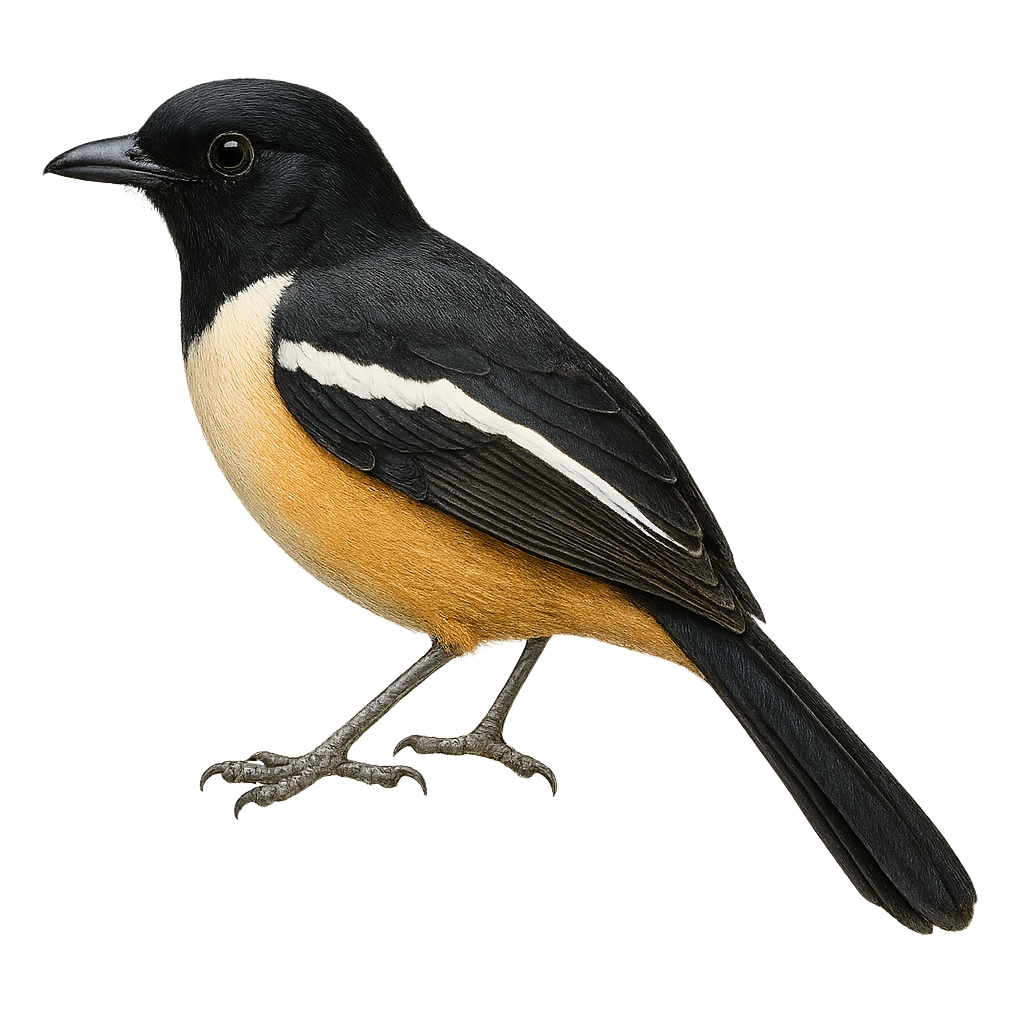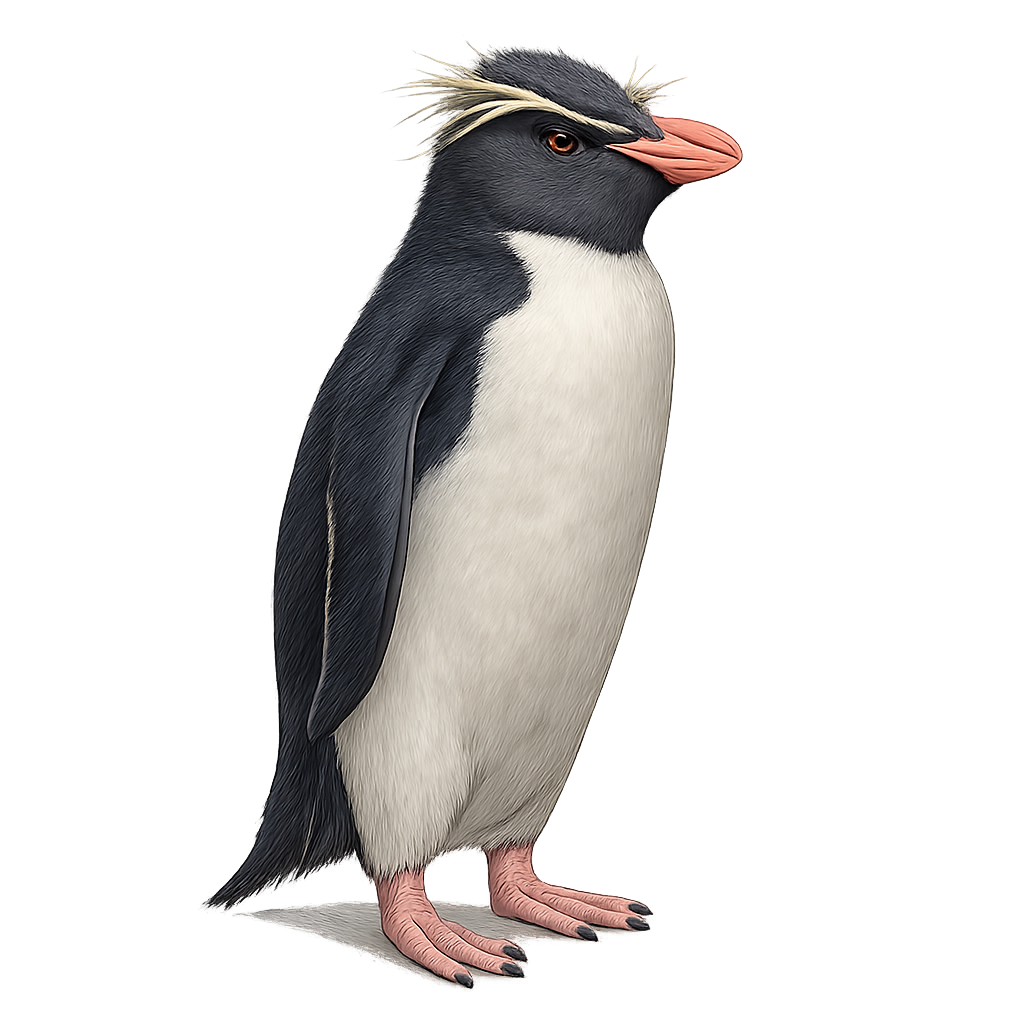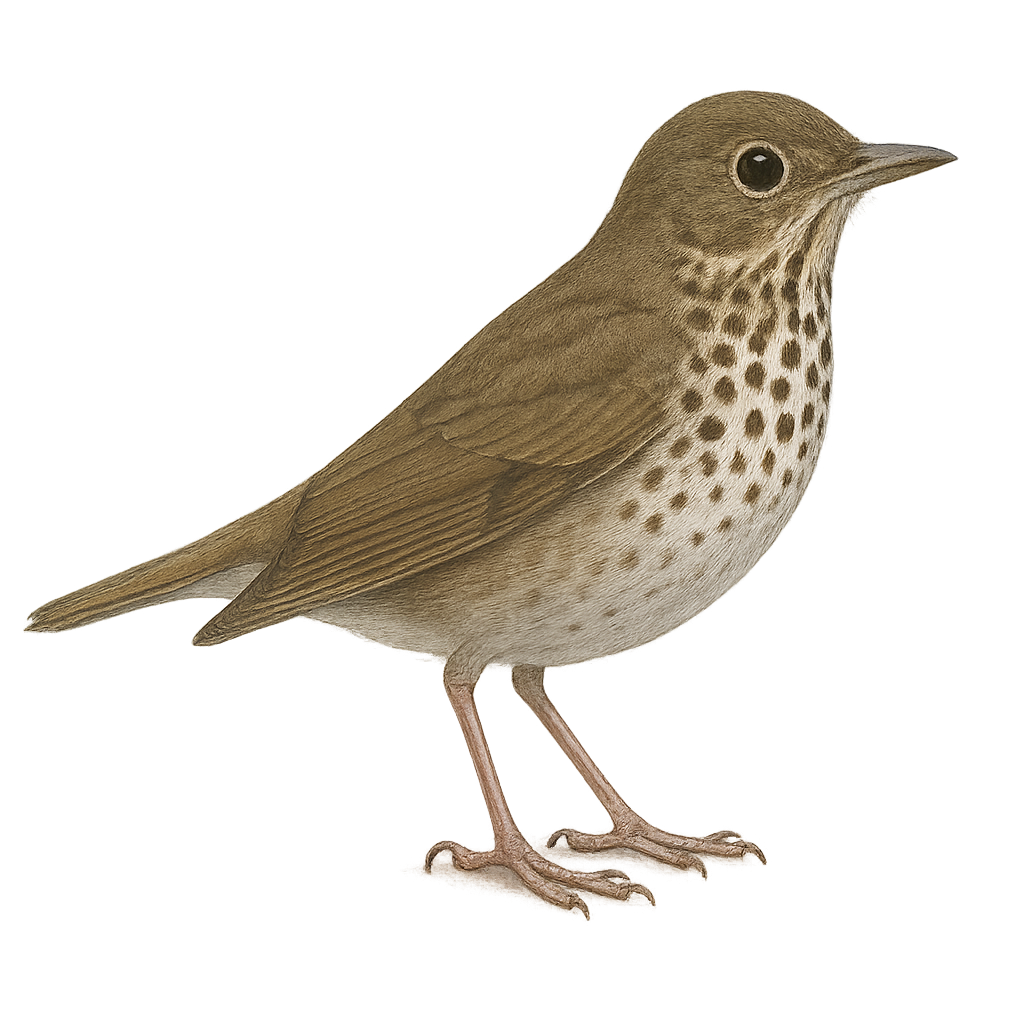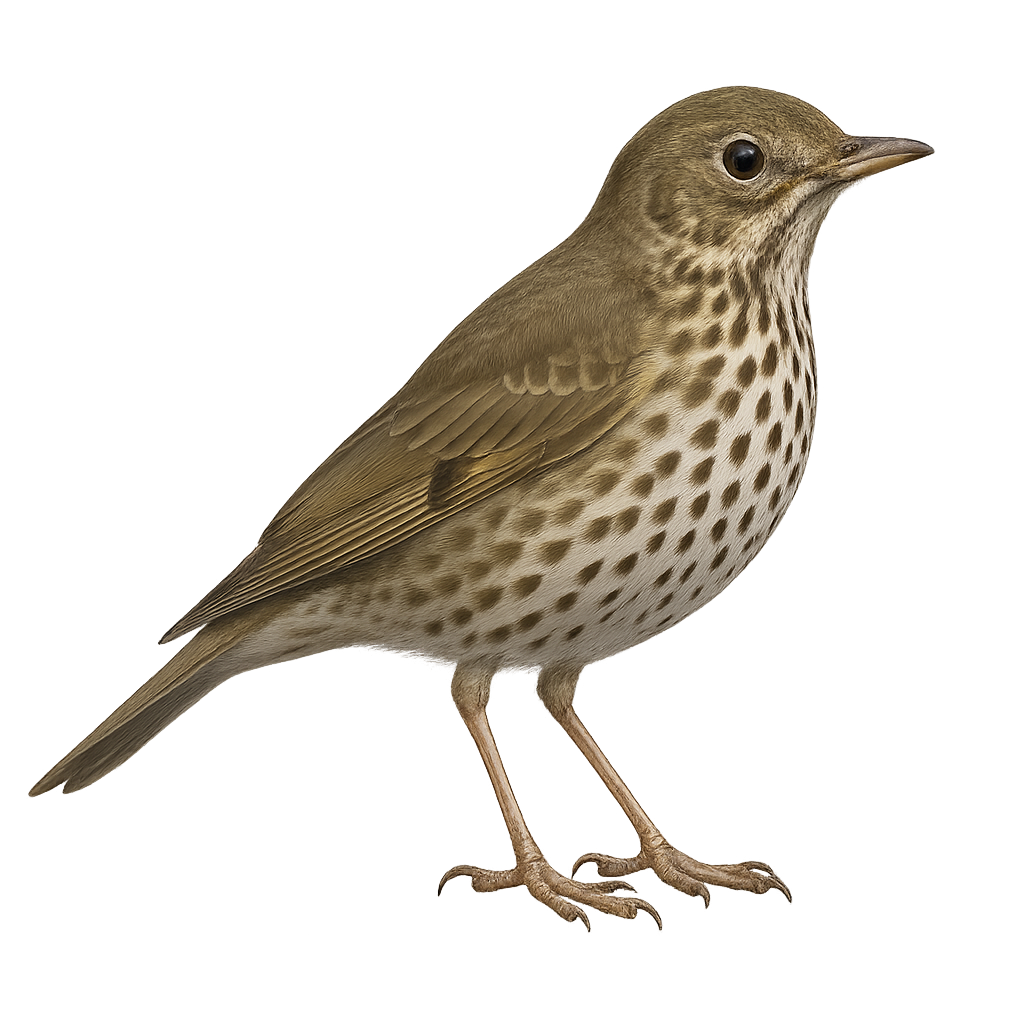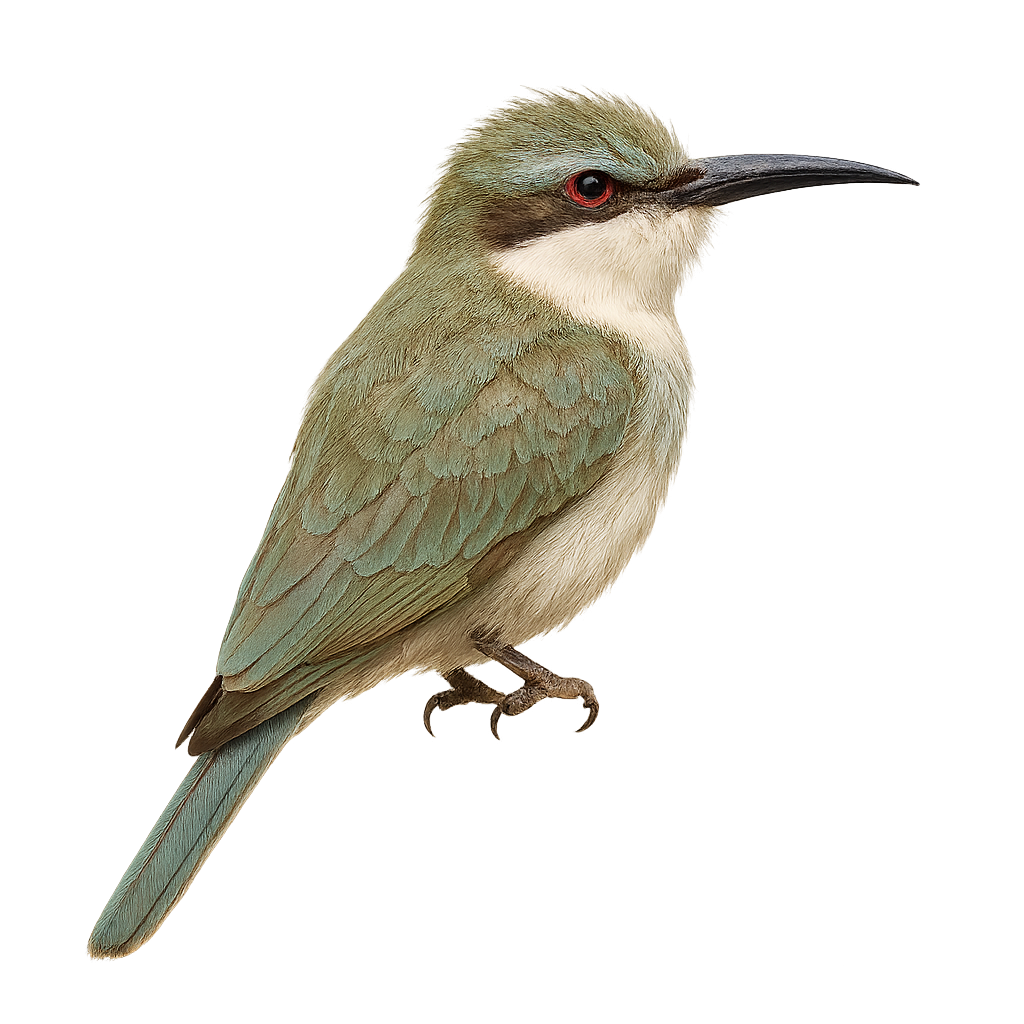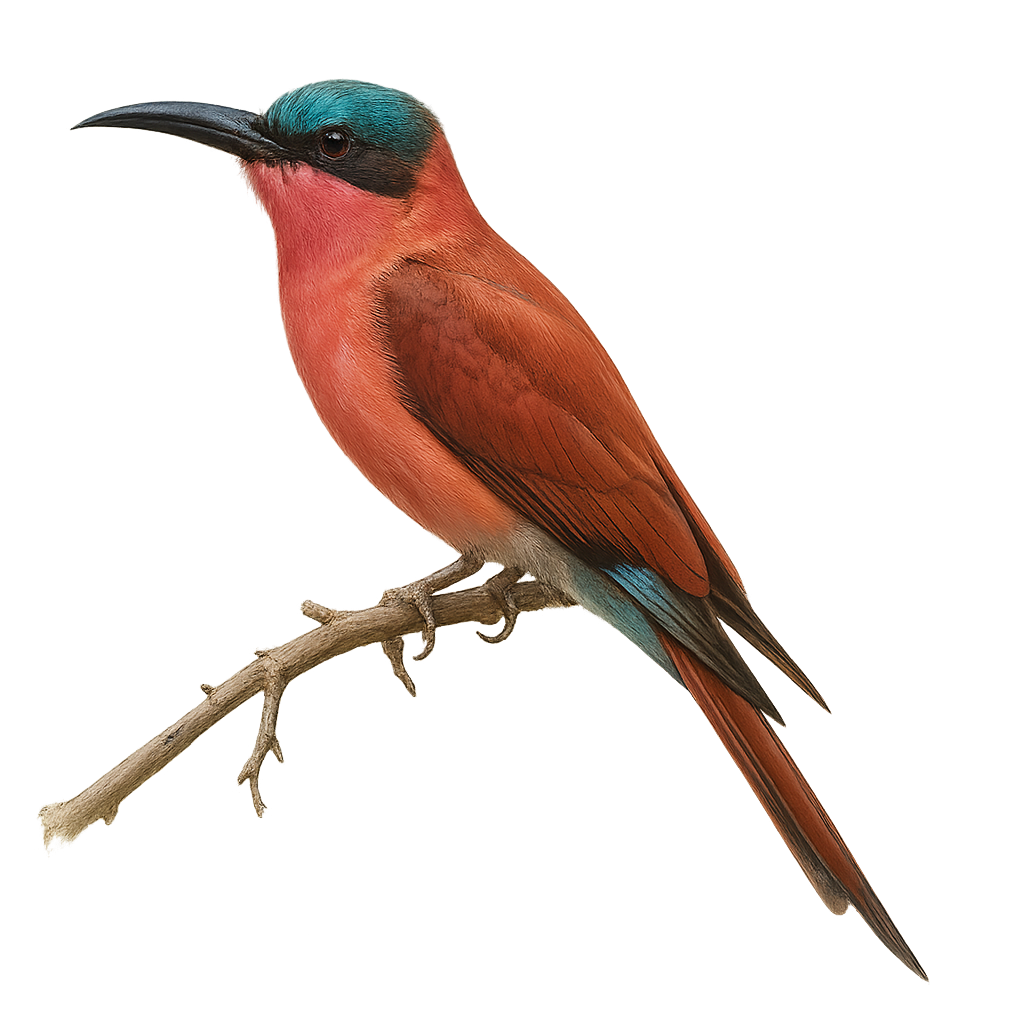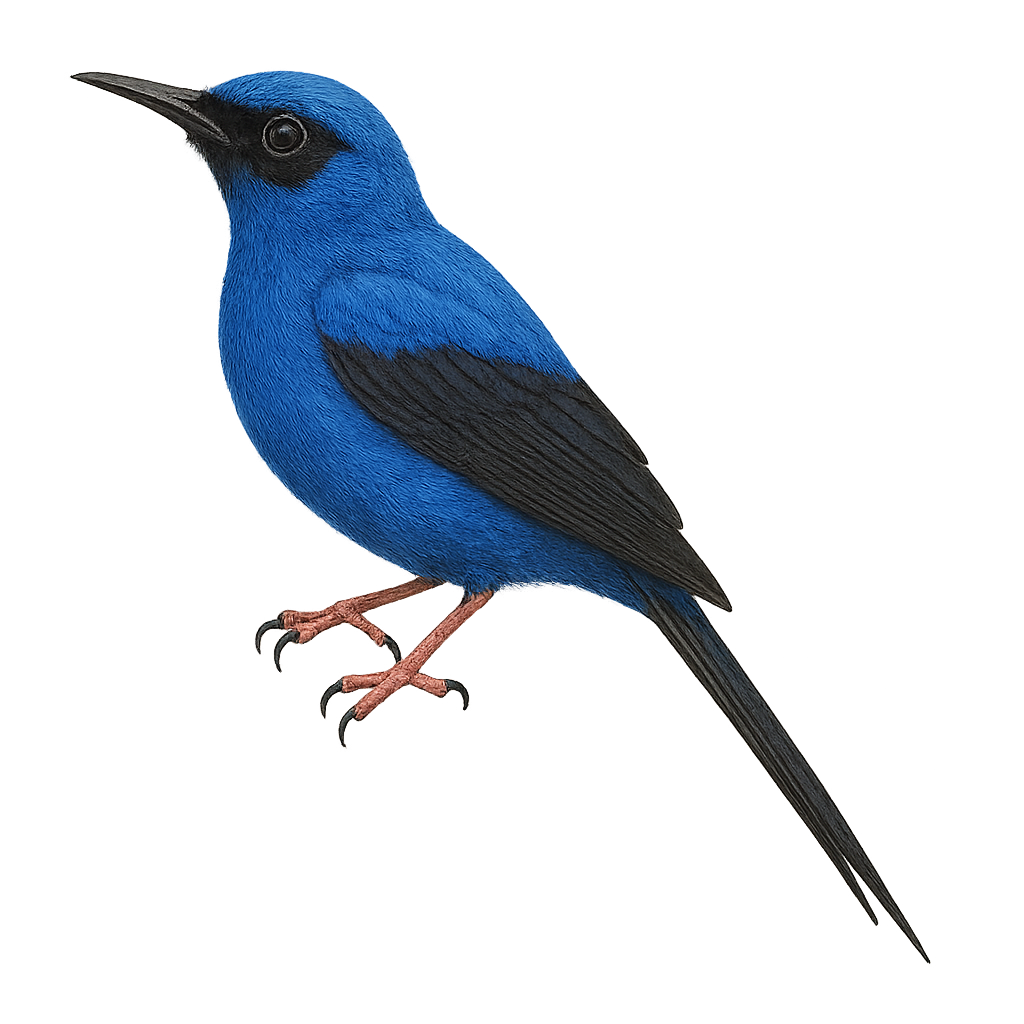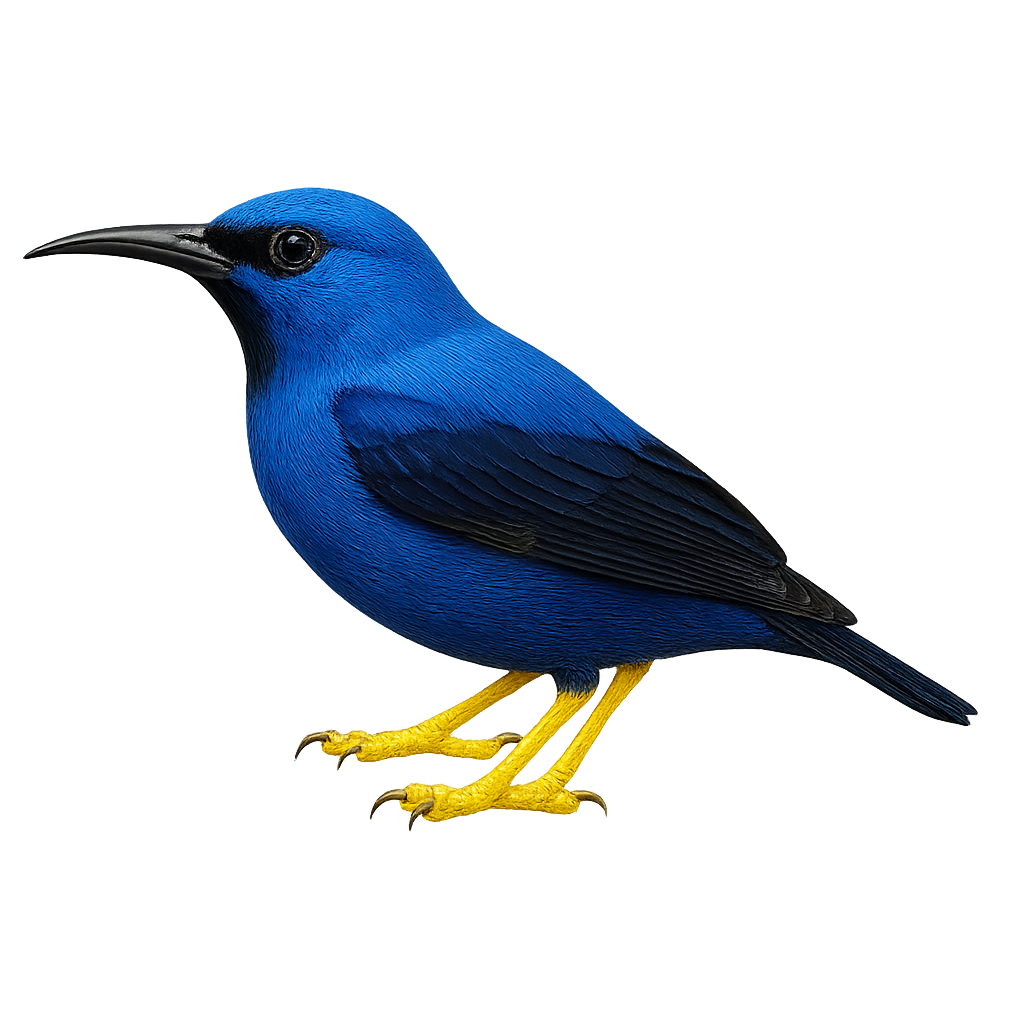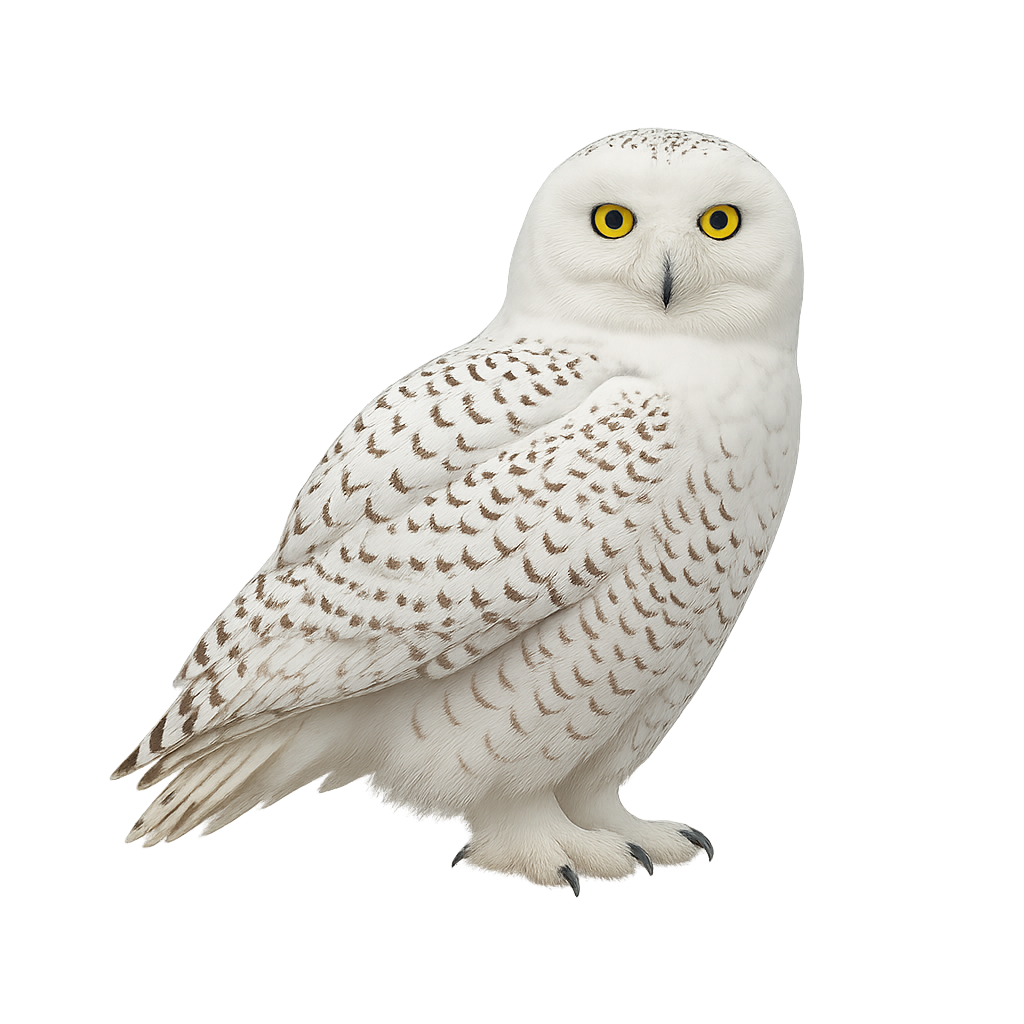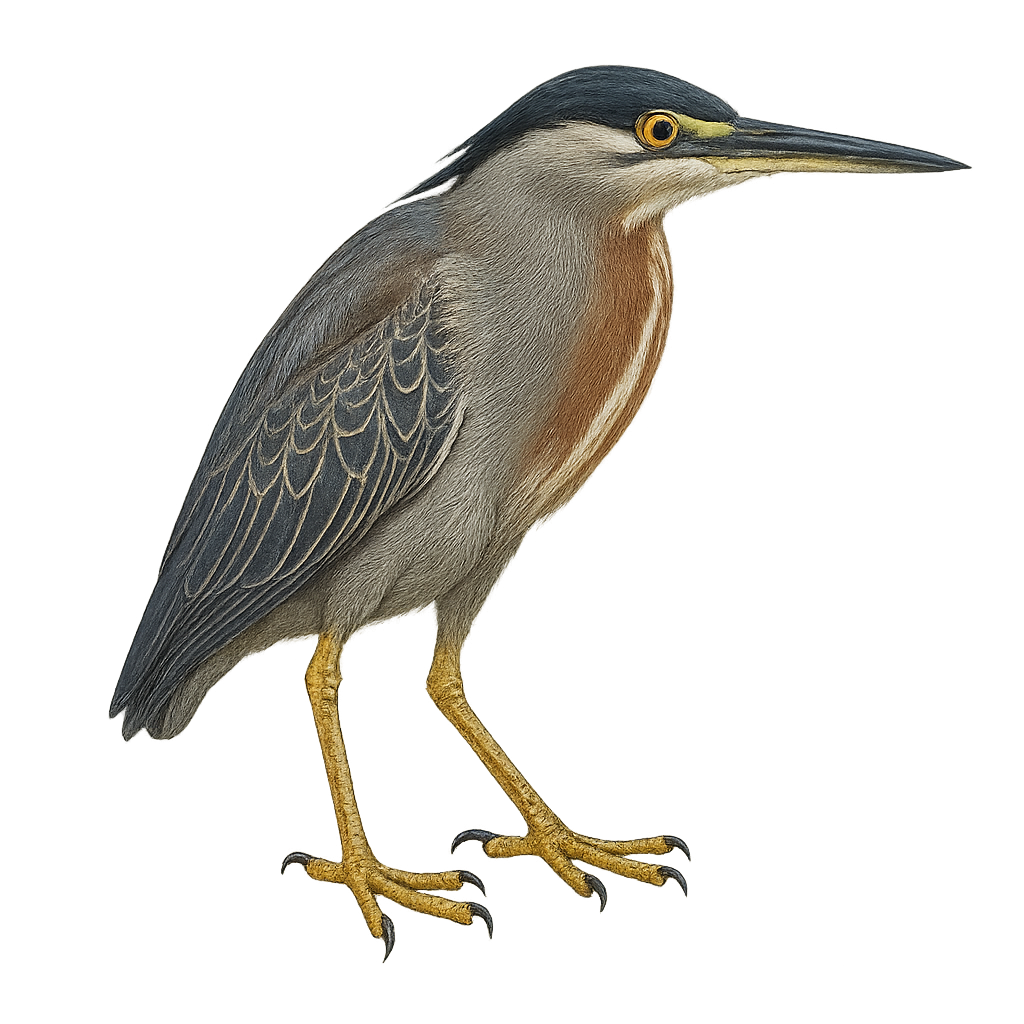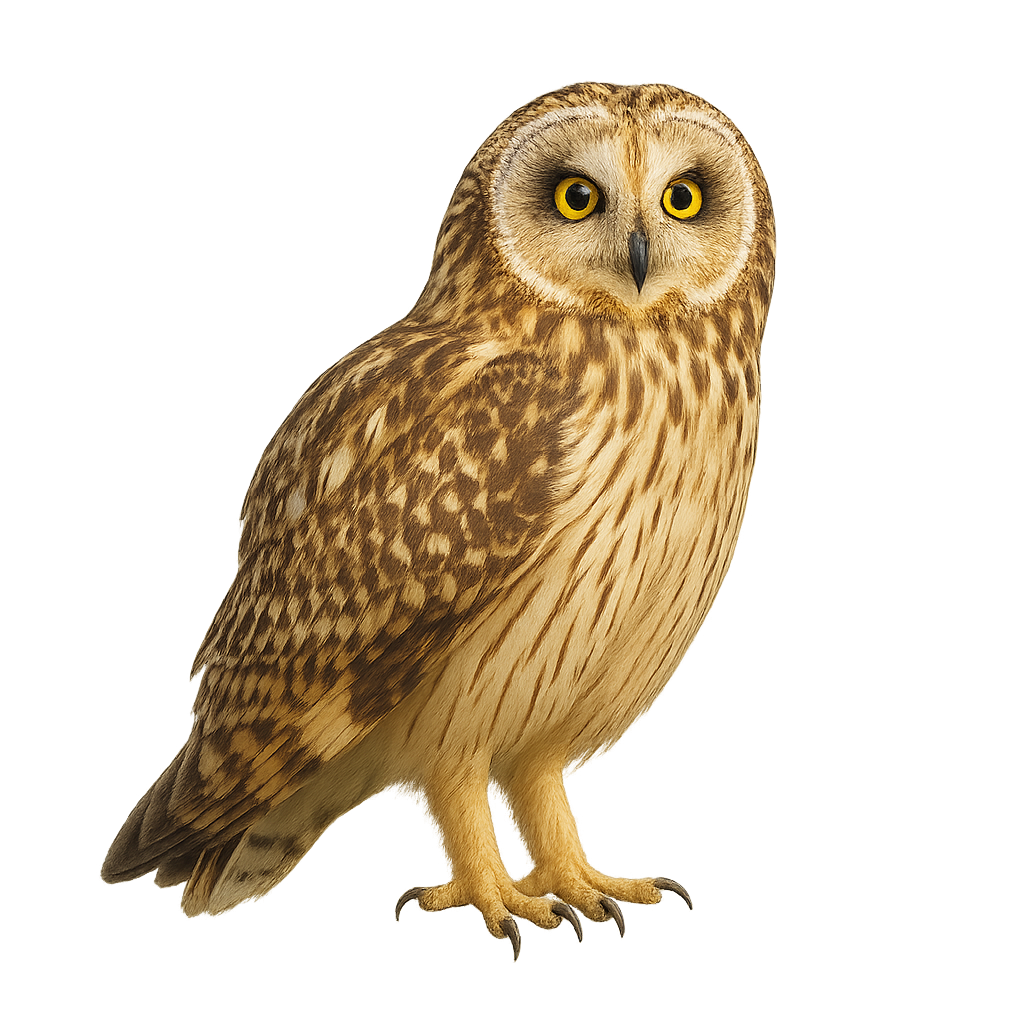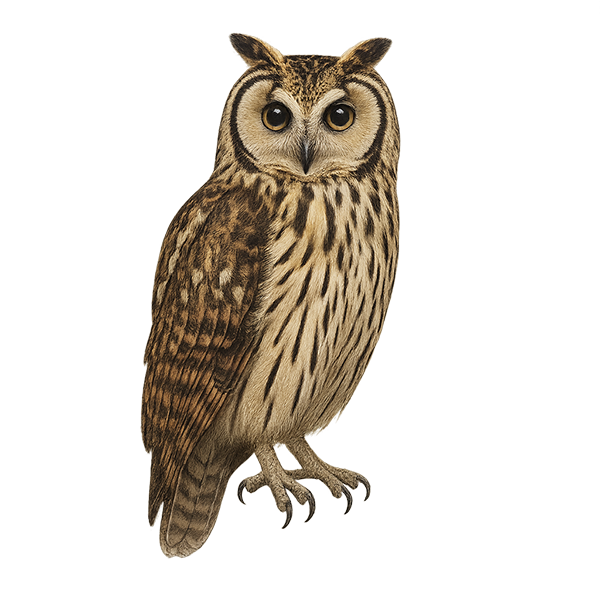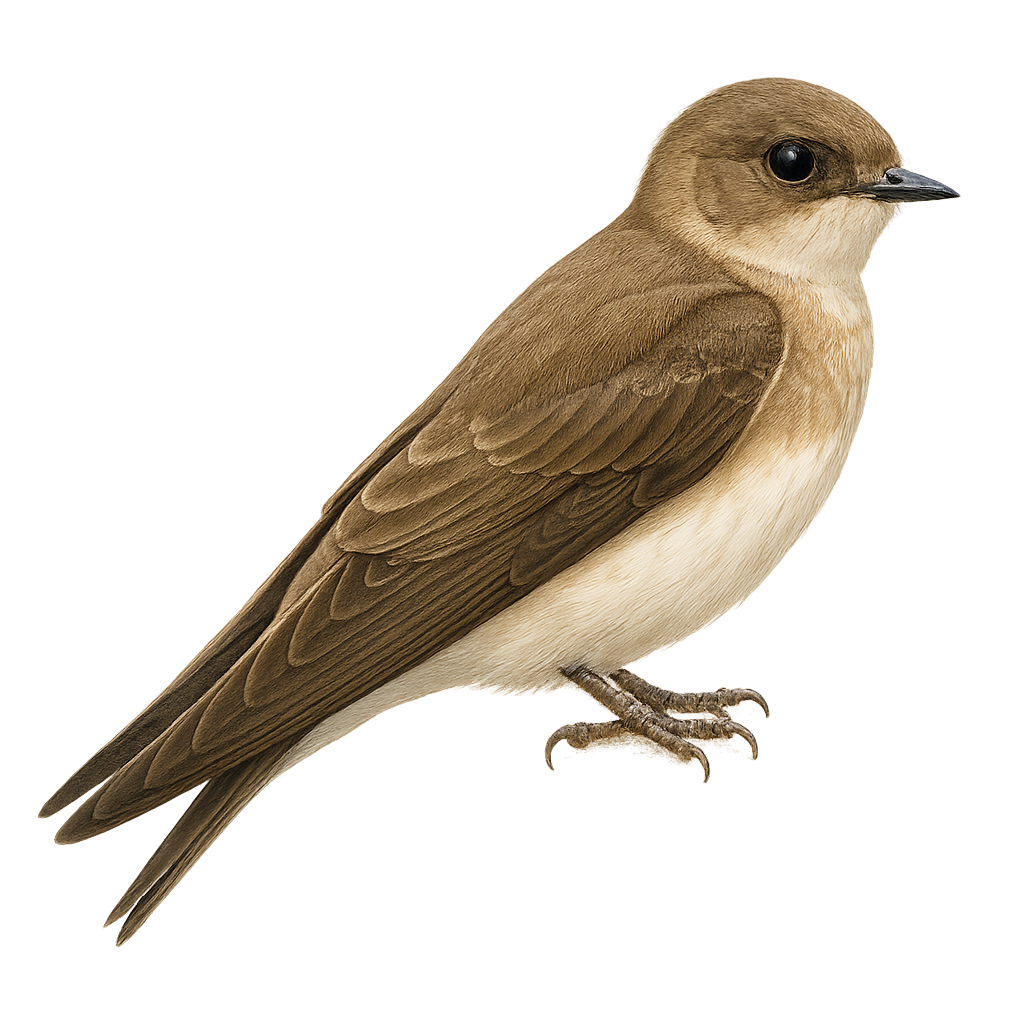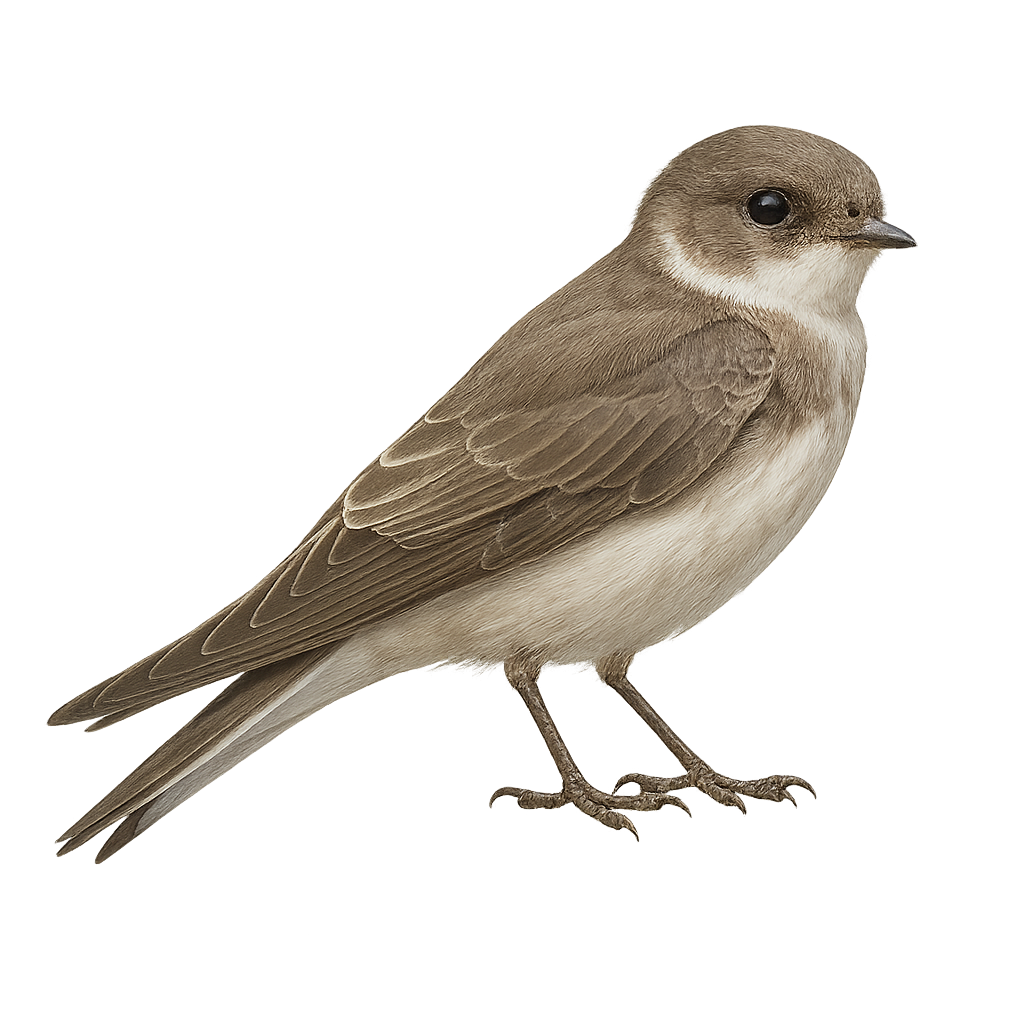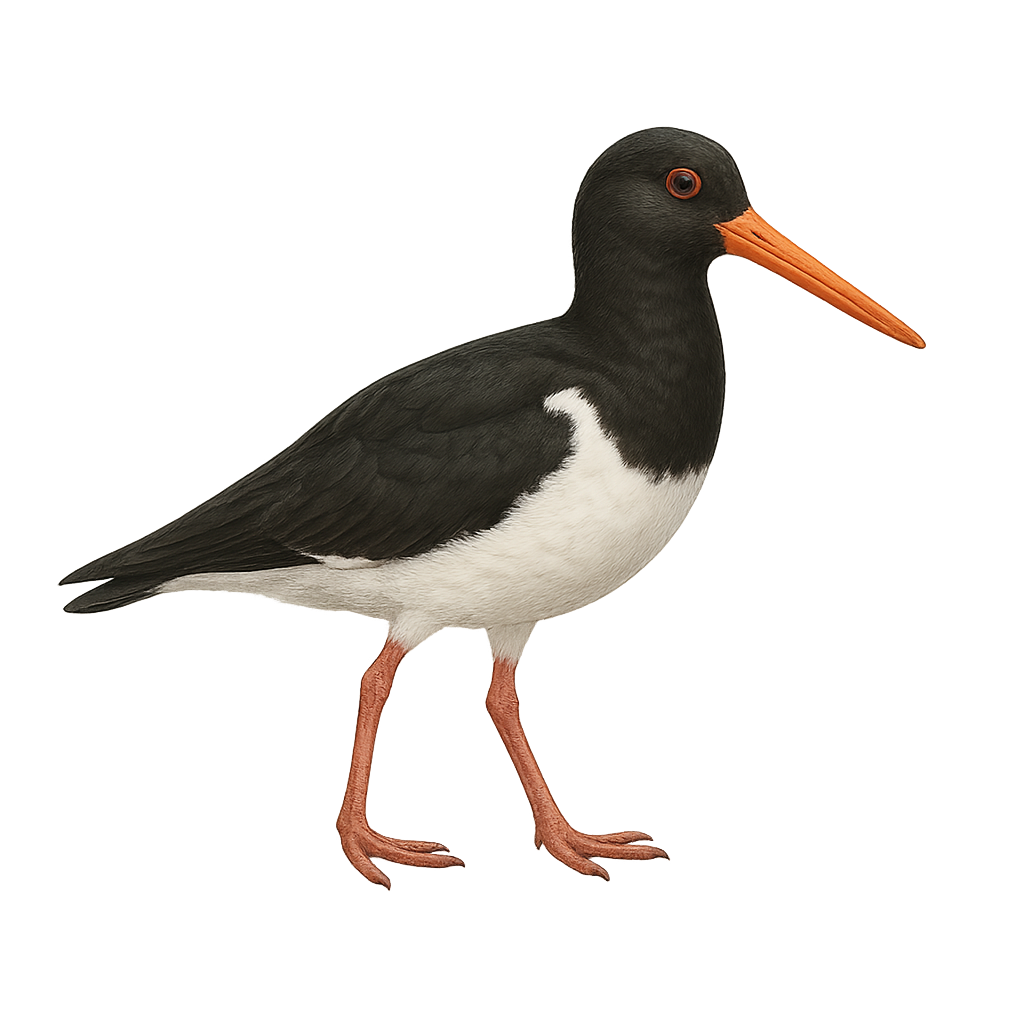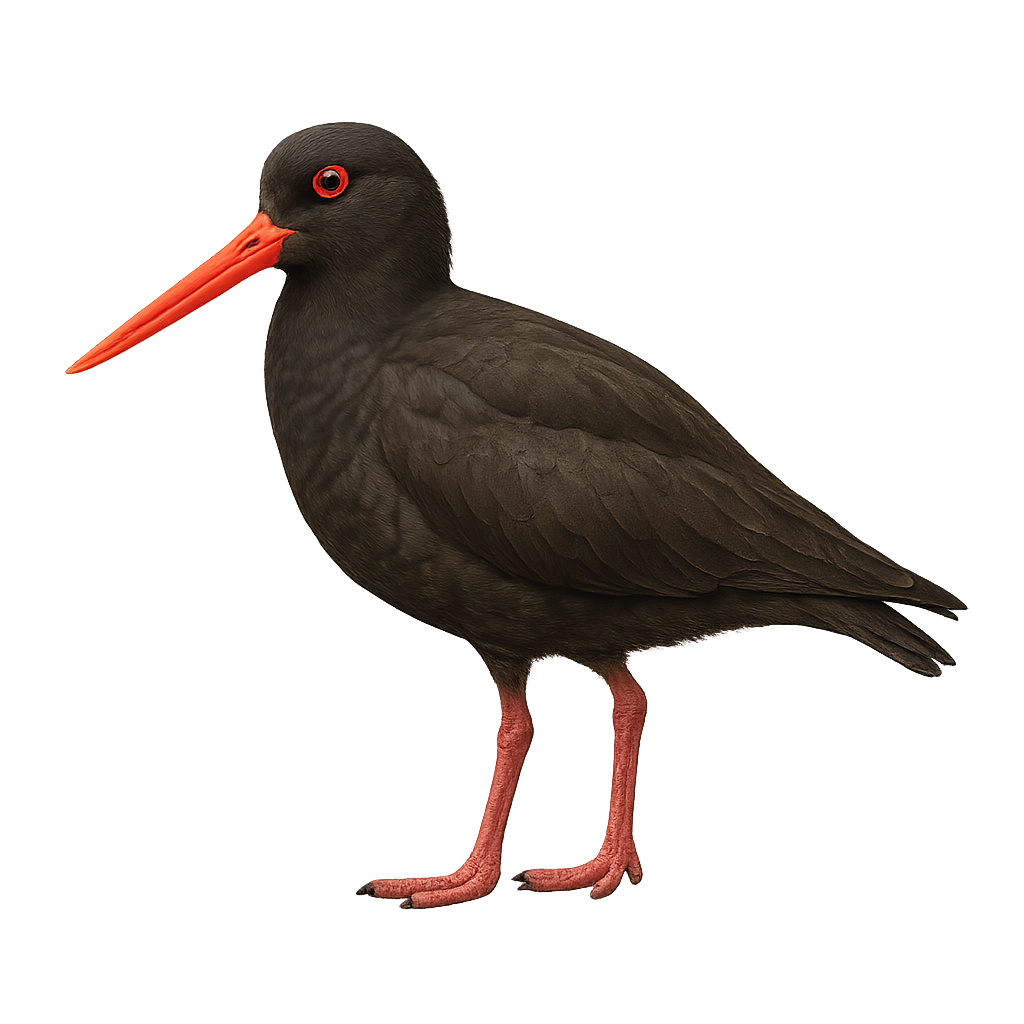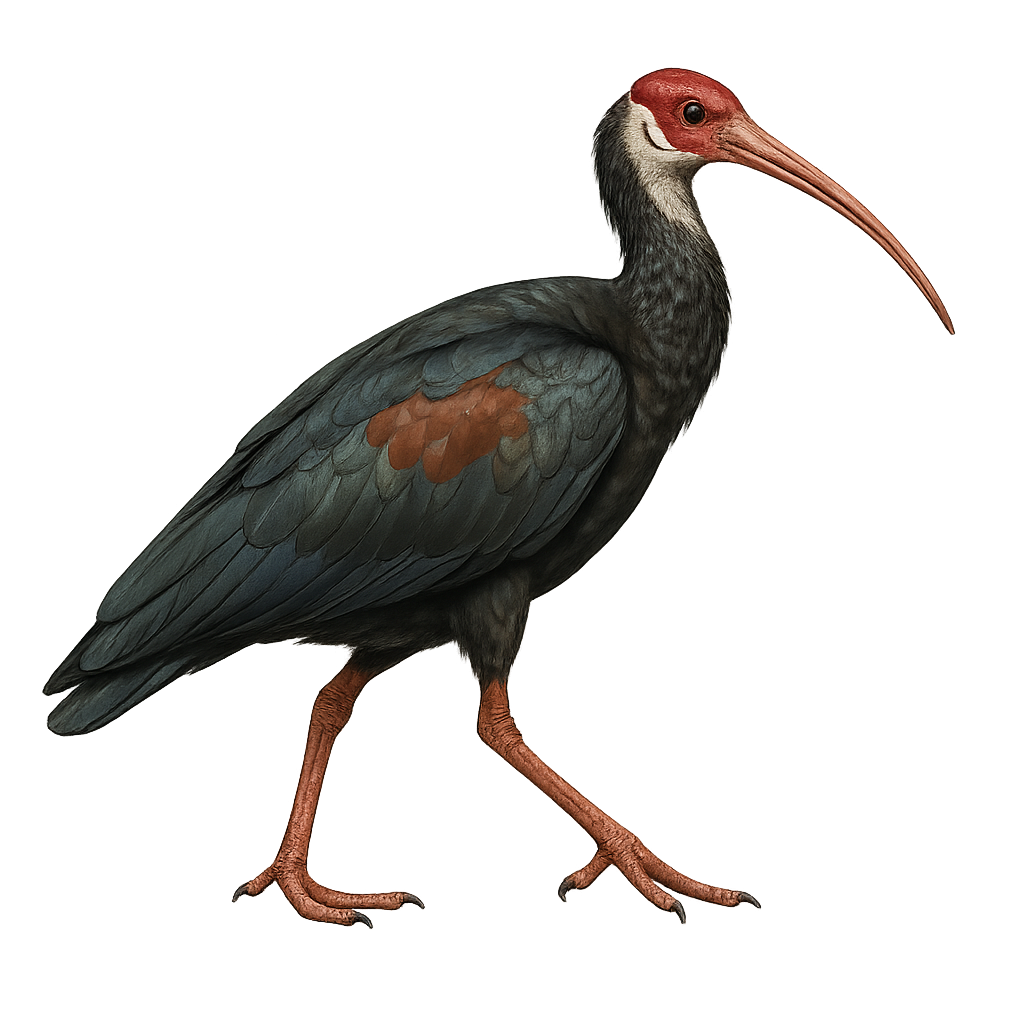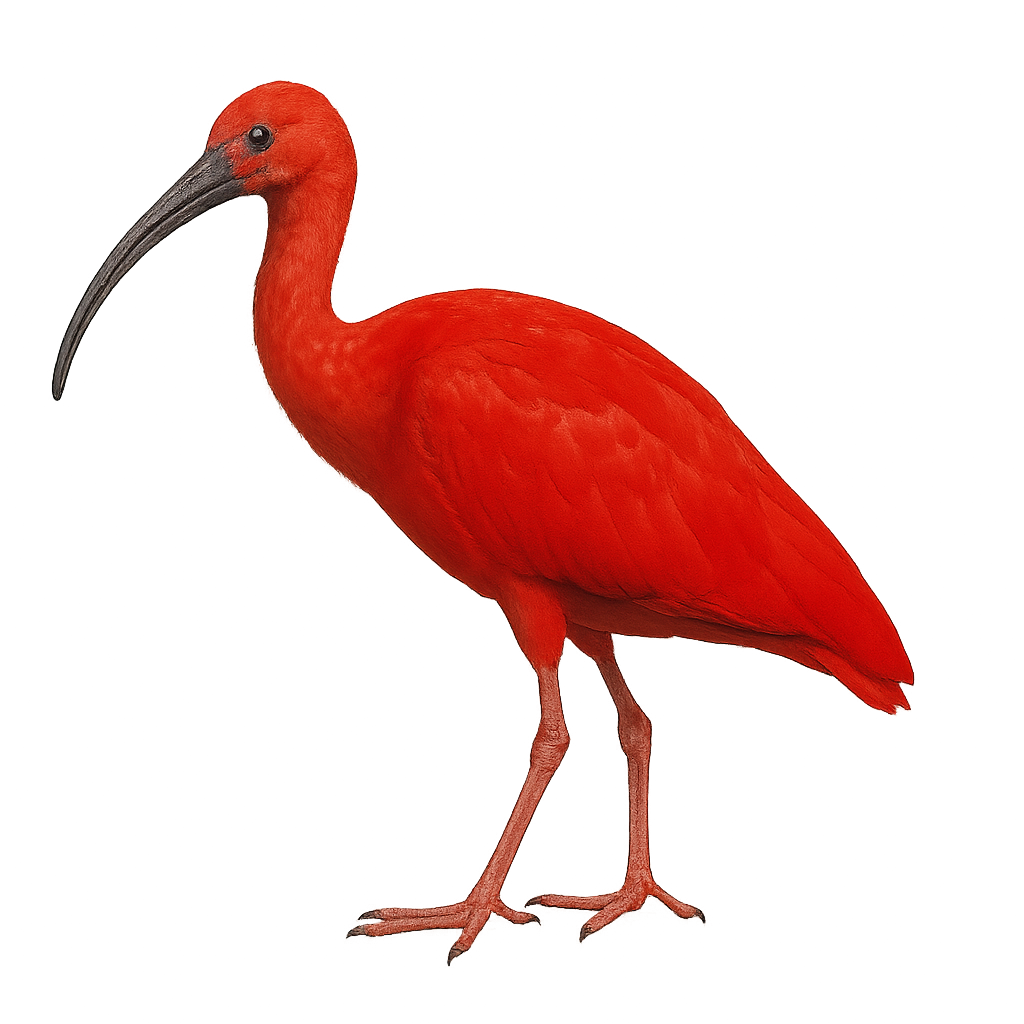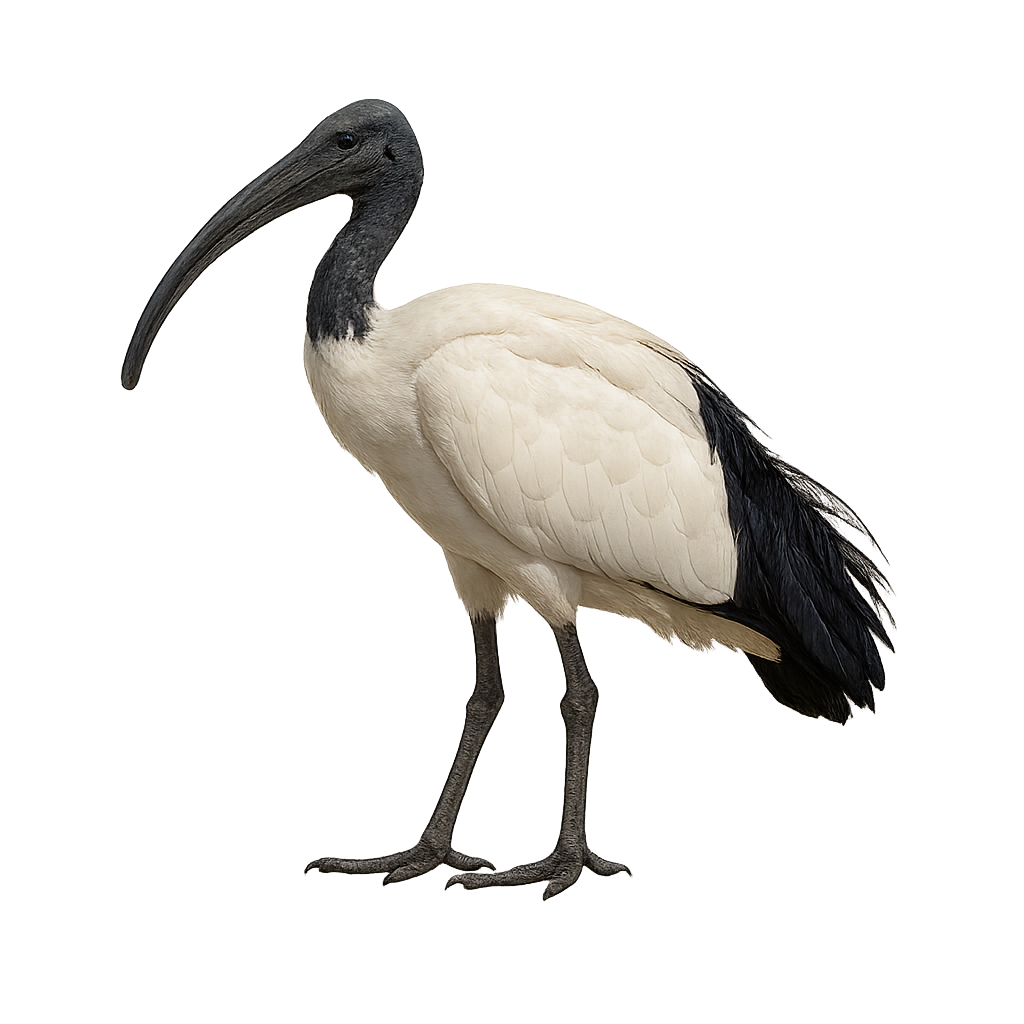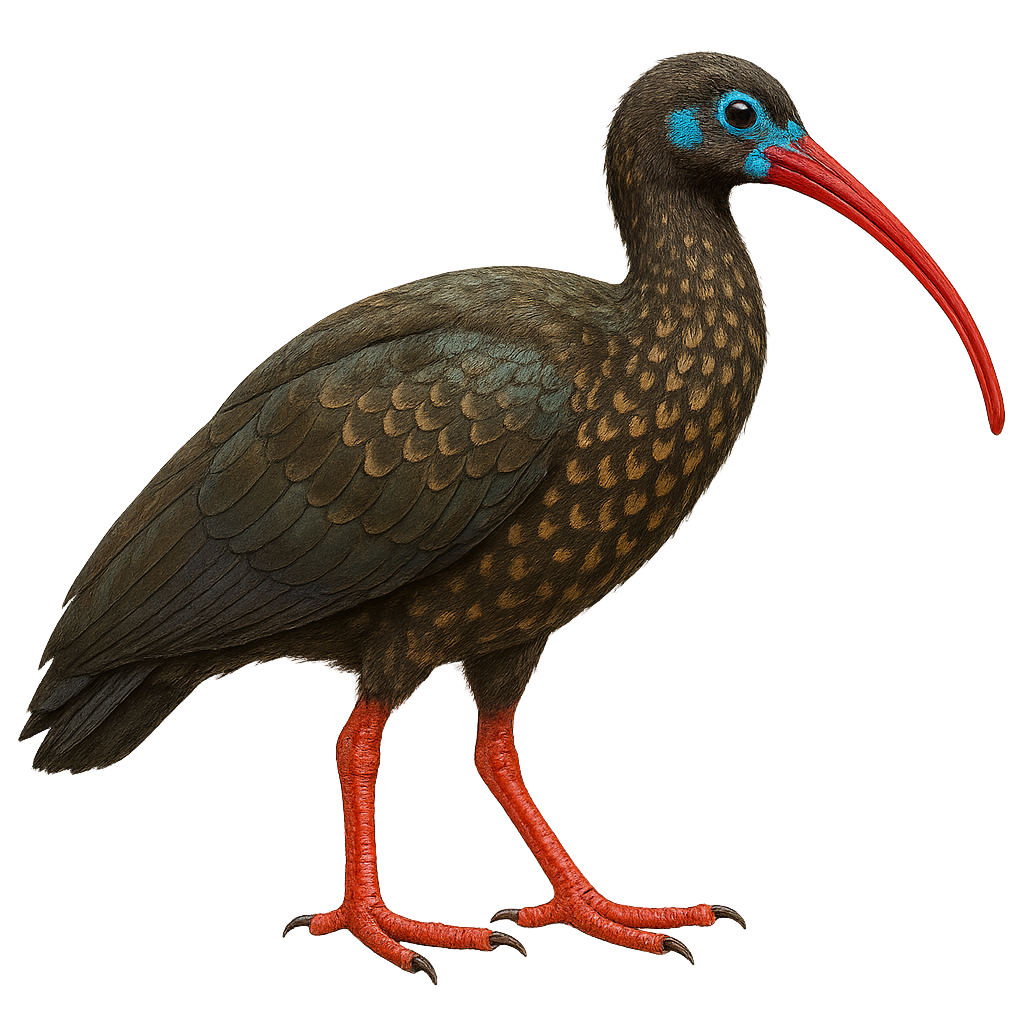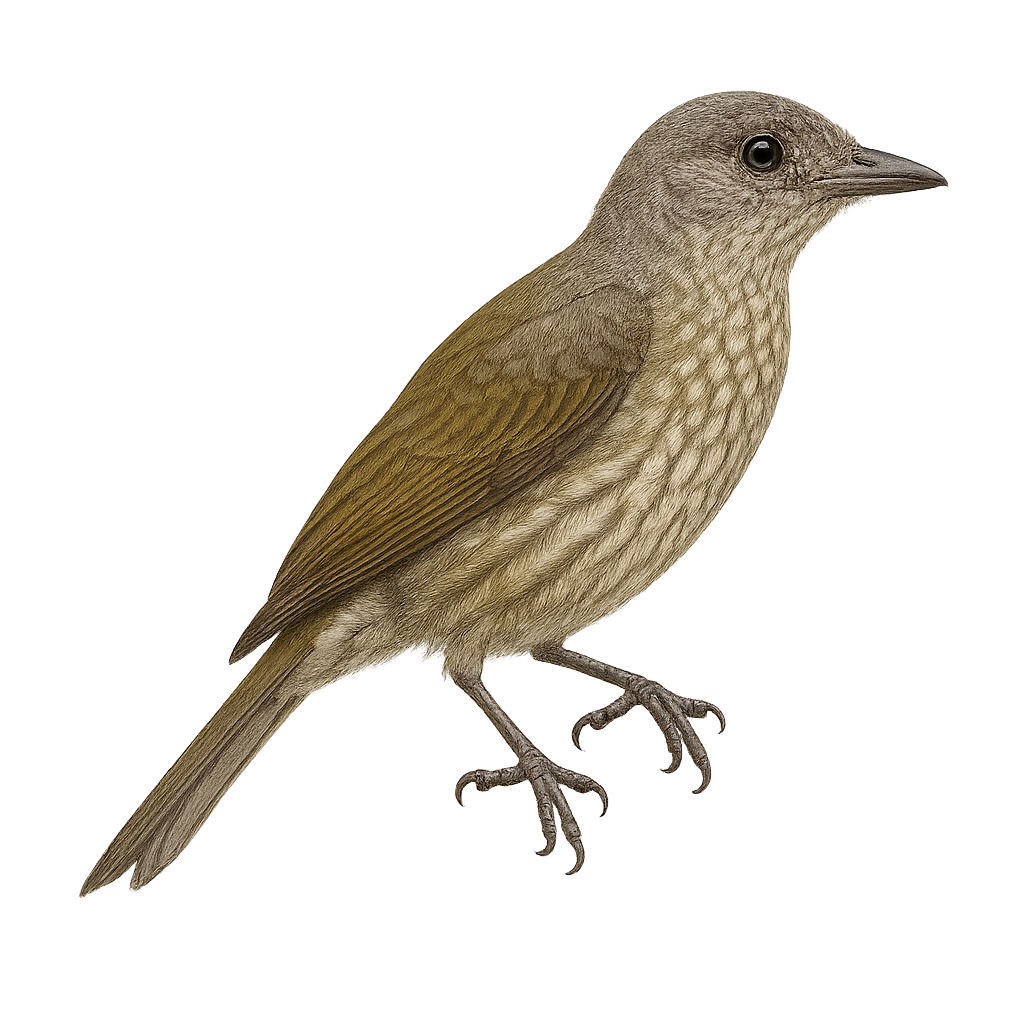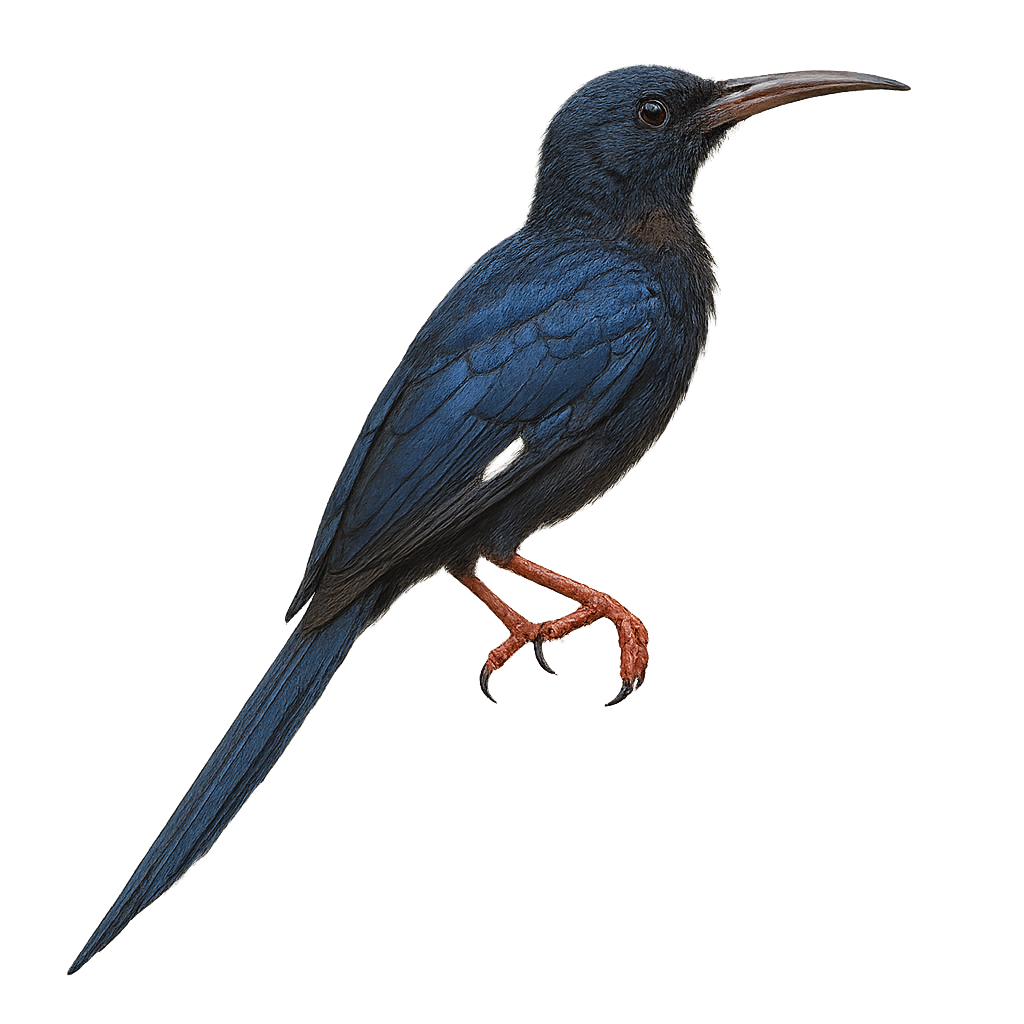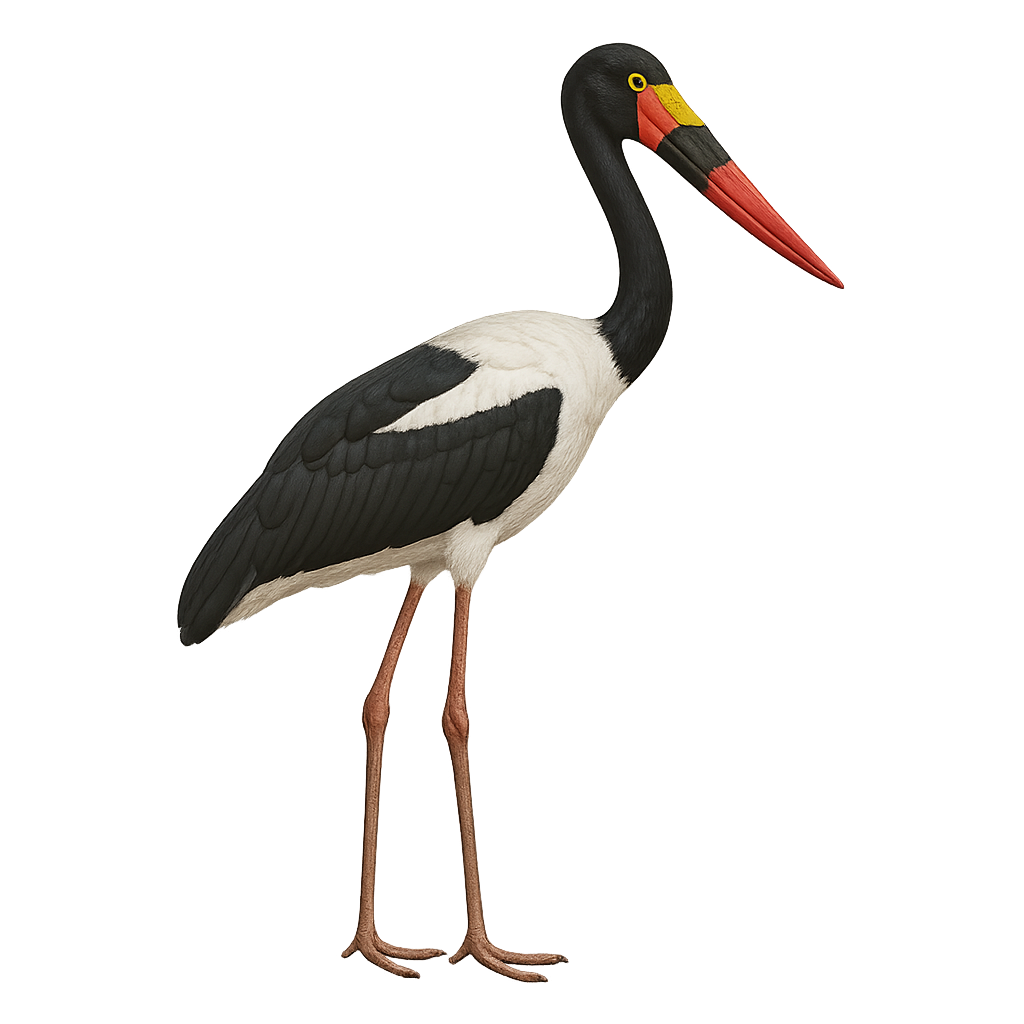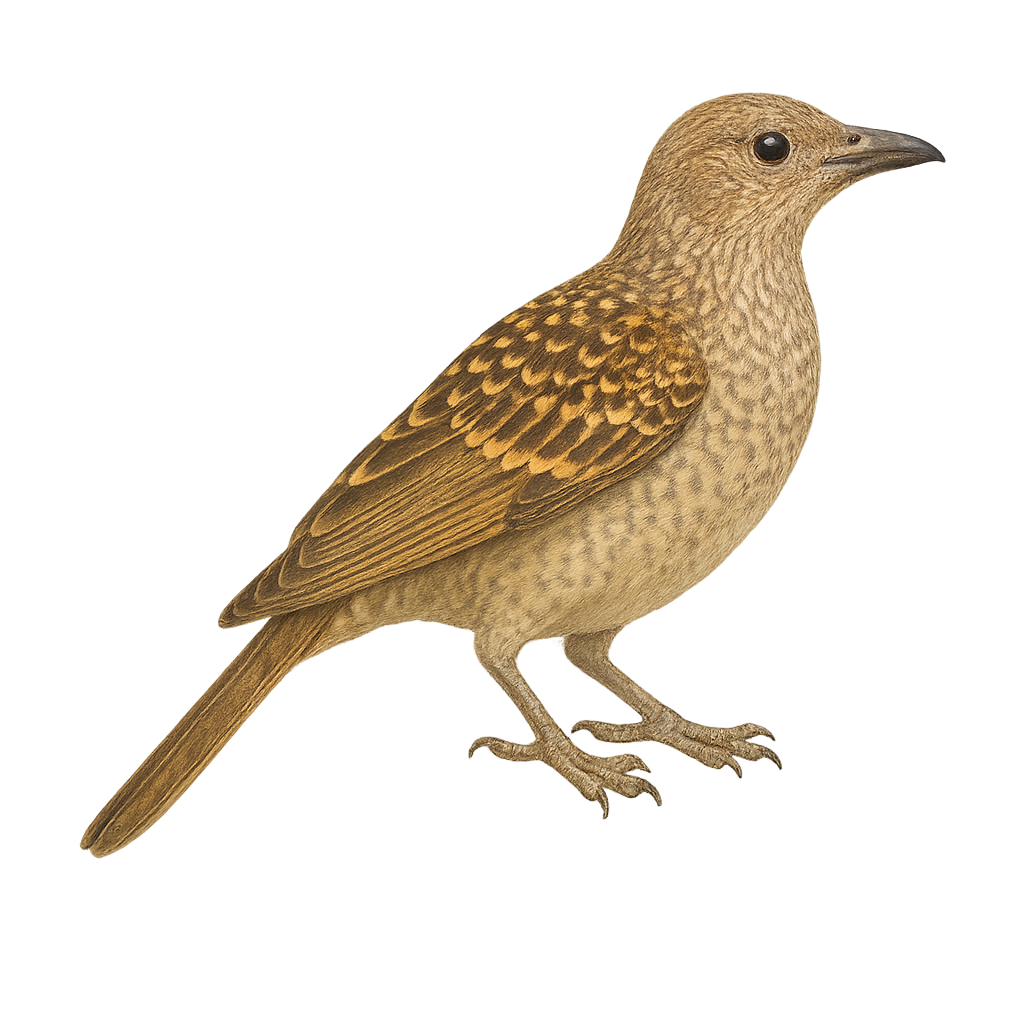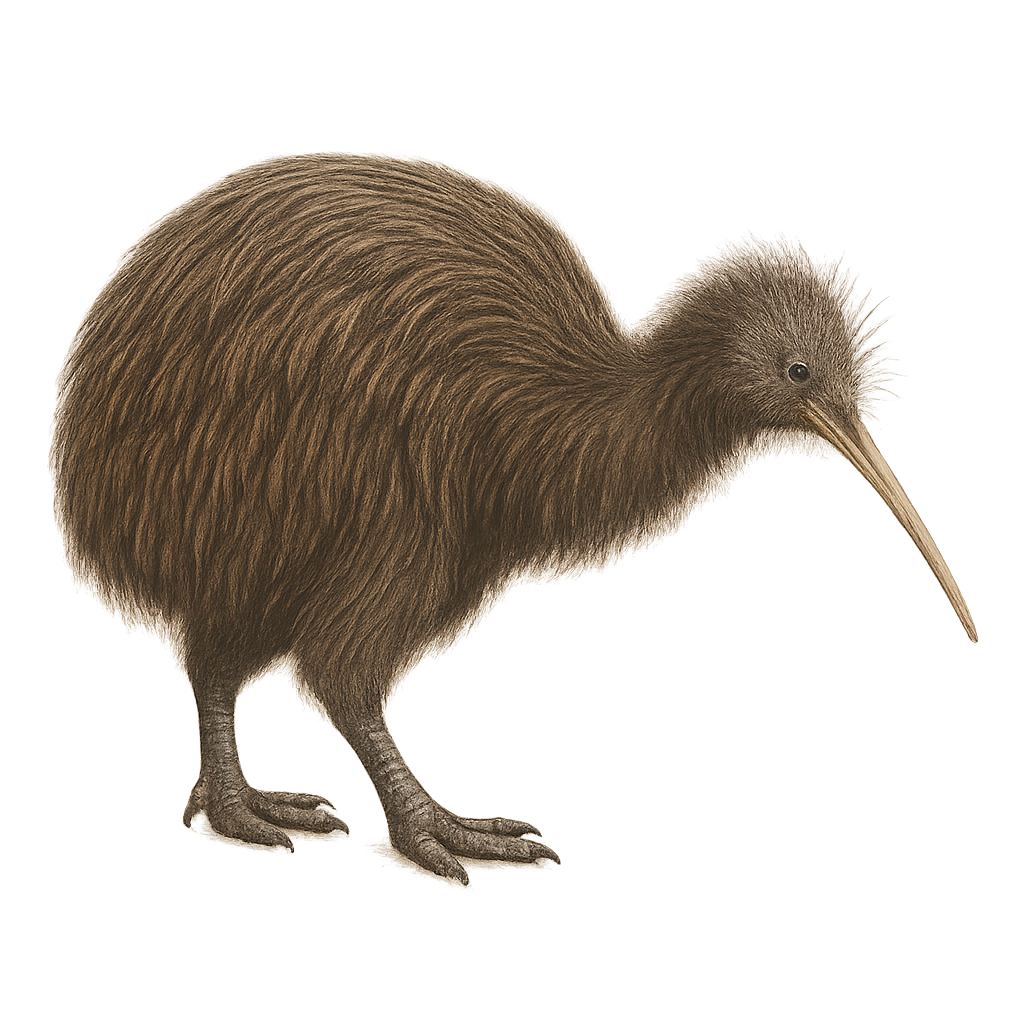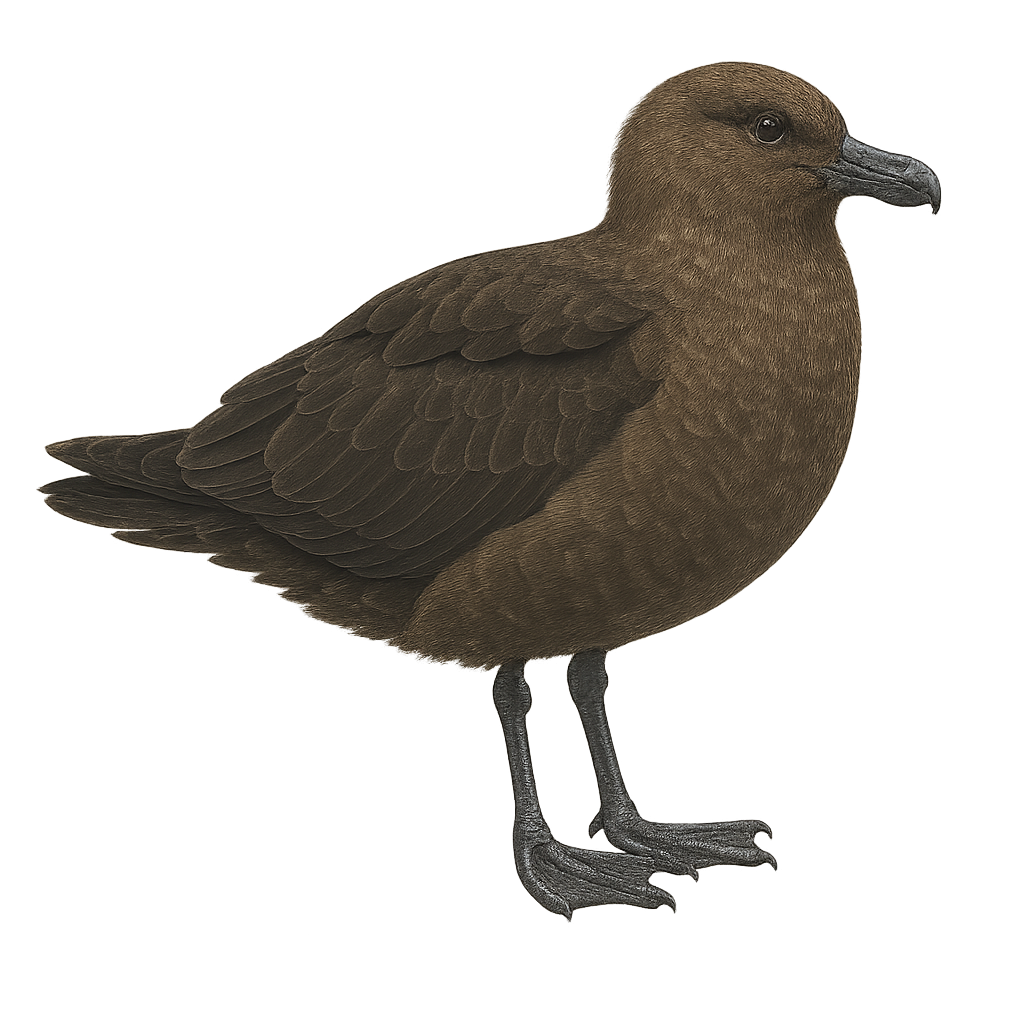The Southern Boubou, Laniarius ferrugineus, is a medium-sized bird, measuring about 20 to 25 cm in length. It is recognizable by its distinctive plumage, with a glossy black back and a rusty belly. This bird is mainly found in southern Africa, where it inhabits forests, thickets, and gardens. Its melodious song is often heard before the bird is seen. The Southern Boubou is a territorial bird, often living in pairs. It primarily feeds on insects but can also consume fruits. Although generally discreet, it may be observed in the open when singing. Its adaptability to various habitats makes it a relatively common species within its range.
Small penguin 45–60 cm long, 2–4.3 kg, with contrasting black-and-white plumage and distinctive yellow crest tufts on each side of the head. Occurs on subantarctic islands, feeds mainly on crustaceans, fish and krill, diving to 100 m, and breeds in large colonies on rocky shores.
The Subantarctic dotterel, or Zonibyx modestus, is a small coastal shorebird with subtle plumage, typically found along sandy shores and lagoons of southern South America. Its pale gray-brown back, white belly, and faint light eyebrow provide excellent camouflage in open habitats. It nests on the ground near water and feeds on aquatic invertebrates, insects, and small crustaceans. A discreet species, it is vulnerable to human disturbance on beaches. Its population is generally considered stable but may be locally threatened.
The Spot-backed Antwren is a small bird from the Thamnophilidae family, primarily found in the humid tropical forests of South America, especially in Colombia and Venezuela. It is characterized by its grey plumage with white spots on its back, providing effective camouflage in its natural habitat. This bird is often seen in pairs or small groups, actively moving in search of insects and spiders. Although discreet, its distinctive song makes it easier to locate. The Spot-backed Antwren plays an important role in the ecosystem by controlling insect populations. Its conservation is crucial as deforestation threatens its natural habitat.
The Swainson's Thrush is a medium-sized migratory bird belonging to the Turdidae family. It is recognizable by its olive-brown plumage on the back and flanks, contrasting with a lighter belly. Its melodious and flute-like song is often heard in the temperate forests of North America, where it breeds during the summer. It prefers wooded habitats, especially coniferous and mixed forests. In the fall, it migrates to Central and South America to spend the winter. The Swainson's Thrush primarily feeds on insects and berries, which it finds on the ground or in bushes. It is generally discreet but can be observed during its migratory movements.
The song thrush is a passerine bird found primarily in forests, hedgerows, and gardens across Europe, Asia, and North Africa. It is easily recognizable by its spotted plumage on the chest and belly, and its olive-brown back. This bird primarily feeds on earthworms, insects, and berries, and is particularly known for its powerful and melodious song, which varies depending on its location and the breeding season.
The Sandhill Crane, or Grus canadensis, is a majestic and slender bird, recognizable by its ash-gray plumage and vivid red crown. It stands about 1 to 1.2 meters tall with a wingspan reaching up to 2 meters. This migratory bird is often seen in large flocks during its seasonal movements between breeding grounds in North America and wintering areas further south. The Sandhill Crane is omnivorous, feeding on aquatic plants, insects, and small vertebrates. It is known for its spectacular courtship dances, which include graceful leaps and wing flapping. Although its conservation status is currently "least concern," it faces threats such as habitat loss and climate change.
The Swallow-tailed Bee-eater is a colorful and fascinating bird, recognizable by its long forked tail and vibrant plumage. It displays bright shades of green, blue, and yellow, making it easily identifiable in its natural habitat. This bird is often seen in small groups, primarily feeding on flying insects that it catches mid-air. It has a particular fondness for bees and wasps, which it skillfully handles. The Swallow-tailed Bee-eater is a partial migrant, inhabiting savannas, open forests, and semi-arid regions of sub-Saharan Africa. Its presence is an indicator of ecosystem health, as it relies on the availability of insects for sustenance.
The Somali Bee-eater is a colorful bird, primarily green with shades of blue and yellow, and a reddish throat. It is endemic to the arid regions of the Horn of Africa, particularly in Somalia and northeastern Kenya. This bird is often seen in small groups, perching on exposed branches from where it hunts flying insects. Its flight is fast and agile, allowing it to catch prey mid-air. The Somali Bee-eater is a social bird, often seen preening each other. It nests in burrows dug into sandy banks, where it lays its eggs. Although its population is stable, it is sensitive to habitat disturbances.
The Southern Carmine Bee-eater, Merops nubicoides, is a vibrant and captivating bird found primarily in southern Africa. It is distinguished by its bright red plumage, turquoise head, and long, tapered tail. This bee-eater is about 35 cm long, with a slightly curved black bill, perfect for catching insects in flight. It frequents sandy riverbanks and open savannas, where it digs burrows for nesting. Sociable by nature, it lives in colonies and feeds mainly on bees and wasps, which it catches in mid-air. Its flight is fast and agile, often accompanied by high-pitched calls. This beautiful bird is a delight to watch, especially during its courtship displays.
The Shining Honeycreeper, Cyanerpes nitidus, is a small, vibrant tropical bird, primarily electric blue with black wings and tail. Males display a striking plumage, while females are generally duller, with green and yellow hues. This bird is commonly found in the humid tropical forests of South America, particularly in Brazil, Colombia, and Venezuela. It primarily feeds on nectar but also consumes insects and fruits. Its slender, curved beak is perfectly adapted for extracting nectar from flowers. The Shining Honeycreeper is an active and social bird, often seen in small groups or pairs.
The Cyanerpes lucidus, or Shining Honeycreeper, is a small tropical bird with vibrant colors, primarily blue with black wings and a slender, curved beak. This nectarivore primarily feeds on nectar but also consumes fruits and insects. It is found in the humid forests and forest edges of Central America, from southern Mexico to Panama. Males display a striking blue plumage, while females are more subdued in green. Their behavior is generally active and social, often seen in small groups. They play a crucial role in pollinating tropical plants.
The Snowy Owl is a large nocturnal raptor, easily recognizable by its pure white plumage, speckled with dark spots on its back and wings. It measures about 55 to 65 cm in length, with a wingspan of 1.3 to 1.5 meters, and weighs between 1.5 and 2.5 kg. Its head is round, with large, piercing yellow eyes and a short, hooked beak. The Snowy Owl primarily inhabits the Arctic regions, notably in Canada, Alaska, Scandinavia, and Russia, where it frequents tundras and snowy landscapes. It primarily feeds on small mammals, such as lemmings, but also hunts birds and occasionally fish. This raptor is an excellent hunter, capable of spotting its prey with its keen vision, even in low light conditions. Although the Snowy Owl is not currently endangered, it is sensitive to climate change and the loss of its natural habitat.
The Striated Heron, or Butorides striata, is a small heron with predominantly grey-green plumage, a black cap, and yellow legs. It is often seen in wetlands, mangroves, and along rivers. This heron is an opportunistic feeder, primarily consuming fish, insects, and small crustaceans. It employs a unique hunting technique, remaining still before quickly striking its prey. Although generally solitary, it can sometimes be seen in small groups. Its ability to adapt to various aquatic habitats allows it to inhabit a wide range of geographical regions, from tropical to temperate areas.
The Short-eared Owl is a small nocturnal raptor, easily recognizable by its pale yellowish plumage and large, piercing yellow eyes. It measures about 34 to 40 cm in length, with a wingspan of 80 to 95 cm, and weighs between 180 and 400 g. Its face is disc-shaped, like that of other owls, and its plumage, which is cream or brown, is speckled with dark spots that provide excellent camouflage in the grasslands and marshes where it resides. The Short-eared Owl primarily inhabits open areas, such as marshes, grasslands, and farmland, across Europe, Asia, and North America. It mainly hunts small mammals, such as voles and mice, as well as birds and insects. This raptor is an excellent nocturnal hunter, using its very sensitive ears and sharp vision to locate prey in the dark. Although the species is not immediately endangered, it is vulnerable to habitat loss, water pollution, and human disturbance.
The Striped Owl, or Asio clamator, is a medium-sized nocturnal raptor known for its prominent ear tufts and brown and white streaked plumage. It primarily inhabits wooded areas and savannas in Central and South America. This owl is an opportunistic hunter, feeding mainly on small mammals, birds, and insects. Its flight is silent, allowing it to surprise its prey. Although primarily nocturnal, it can be seen at dawn or dusk. The Striped Owl is a solitary bird, except during the breeding season when it forms pairs.
The Southern Rough-winged Swallow, Stelgidopteryx ruficollis, is a small bird from the Hirundinidae family. It is characterized by its brown plumage on the back and lighter underparts, with a distinctive rufous hue on the forehead. This species is mainly found in Central and South America, frequenting open areas near water such as rivers and lakes. It is often seen in flight, catching insects mid-air with agility and speed. Sociable in nature, it nests in colonies, often in natural cavities or man-made structures. Its breeding period varies by region but is generally active during the warmer months.
The sand martin is a small migratory passerine bird found primarily along rivers, lakes, and wetland areas in Europe, Asia, and North Africa. It is easily recognized by its brown-olive plumage on the back and white on the belly, as well as its social behavior when it gathers in colonies to nest. This small bird primarily feeds on insects, which it captures in flight during its passes over the water.
The South Island Oystercatcher is a coastal bird endemic to New Zealand, primarily found on the South Island. It is characterized by its black and white plumage, bright red long bill, and pink legs. This bird is often seen on sandy beaches and estuaries, where it feeds mainly on mollusks and crustaceans. Although generally solitary, it can be observed in small groups, especially outside the breeding season. The South Island Oystercatcher is a migratory bird, moving to the north of the South Island and the North Island during the austral winter. Its population is stable but remains vulnerable to human disturbances and predation by introduced species.
The Sooty Oystercatcher is a medium-sized coastal bird, easily identified by its deep black plumage and bright red bill. It primarily inhabits the rocky and sandy shores of Australia, feeding on mollusks, crustaceans, and other marine invertebrates. Its piercing call is often heard before the bird is seen. While usually observed in pairs or small groups, it can form large colonies during the breeding season. The Sooty Oystercatcher is a sedentary bird, generally remaining loyal to its territory year-round. Its ability to adapt to various coastal environments makes it a resilient species, although some populations may be vulnerable to human disturbances and habitat loss.
The Southern Bald Ibis, Geronticus calvus, is a medium-sized bird known for its distinctive bare, reddish head and glossy black plumage with metallic sheen. It inhabits open grasslands and mountainous regions of southern Africa, particularly in South Africa, Lesotho, and Eswatini. This gregarious bird feeds mainly on insects, small reptiles, and seeds, which it finds by probing the ground with its long, curved bill. Colonies often nest on cliffs or rocky outcrops, building cup-shaped nests with twigs and grass. Although their population is stable, they are vulnerable to habitat loss and human disturbances.
Native to coastal regions of South America and the Caribbean, the scarlet ibis is a bird recognizable by its bright red plumage. It primarily lives in wetlands and mangroves, feeding mainly on small fish, crustaceans, and invertebrates. This migratory bird is often seen in groups, where its bright colors create impressive visual displays. While the scarlet ibis is not threatened, habitat destruction poses a risk to its population.
The Sacred Ibis is a large bird with primarily white plumage, with black feathers on its wings and a bare head. It measures about 65 to 75 cm in length, with a wingspan of 1.2 to 1.3 meters, and weighs between 1.5 and 2.5 kg. Its beak is long and curved, adapted for probing the ground in search of small invertebrates, fish, crustaceans, and mollusks. The Sacred Ibis primarily inhabits wetlands, such as marshes, rivers, and lakes, in sub-Saharan Africa, as well as Southeast Asia and Egypt. This bird holds particular significance in ancient Egyptian culture, where it was associated with the deity Thoth, the god of wisdom and writing. The Sacred Ibis is often seen in large colonies and prefers to feed in groups, probing water and mud for food. Although the species is not immediately endangered, it is vulnerable to habitat loss, pollution, and hunting.
The Spot-breasted ibis, scientifically known as Bostrychia rara, is a fascinating bird belonging to the Threskiornithidae family. This bird is distinguished by its dark plumage and green iridescence on the head, giving it a unique and captivating appearance. It primarily inhabits wetlands, marshes, and dense tropical forests, where it feeds on small invertebrates, fish, and plant matter. Although not very shy, it remains suspicious of humans, making observation a challenge. Its breeding period is poorly documented, but it is known to build nests in trees, often in colonies. Its population is currently stable, but deforestation and habitat loss could threaten its future.
The Spotted Honeyguide, or Indicator maculatus, is a fascinating bird belonging to the family Indicatoridae. This small bird is primarily known for its unique behavior of guiding humans and animals to wild bee hives, from which it derives its name. It measures about 18 cm in length and features an olive-brown plumage with distinctive white spots on its wings and belly. Its natural habitat spans the tropical and subtropical forests of Central and West Africa. The Spotted Honeyguide is a diurnal bird, active mainly during the day, and feeds primarily on beeswax and bee larvae. Although its conservation status is currently considered "least concern," deforestation and habitat loss could pose long-term threats.
The Somali Hoopoe is a fascinating bird, recognizable by its glossy black plumage with metallic sheen and long curved beak. It primarily inhabits the arid and semi-arid regions of the Horn of Africa, notably in Somalia and parts of Ethiopia. This bird is often seen in small groups, feeding on insects it digs out of the ground with its beak. Although it is relatively not very shy, it remains cautious of potential threats. Its song is a mix of whistles and trills, often heard at dawn and dusk. The Somali Hoopoe plays an important role in its ecosystem by controlling insect populations.
The Saddle-billed Stork is a large wading bird with distinctive black and white plumage and a bright red bill with a black band. It stands about 1.5 meters tall and has an impressive wingspan. Found mainly in sub-Saharan Africa's wetlands, it feeds on fish, frogs, and small reptiles. This majestic bird is often seen alone or in pairs, slowly patrolling shallow waters in search of prey. Although its conservation status is currently of least concern, habitat destruction poses a potential threat. The Saddle-billed Stork is a symbol of African wetland biodiversity and a fascinating sight for birdwatchers and nature enthusiasts.
The Spotted Bowerbird, or Chlamydera maculata, is a fascinating bird native to Australia. It is renowned for its elaborate courtship behaviors, where the male constructs structures called bowers, decorated with various colorful objects to attract females. This medium-sized bird features a brown plumage speckled with white, with a distinctive pink patch on the back of its head. It primarily inhabits dry forests, savannas, and open woodland areas. The Spotted Bowerbird is diurnal, being most active in the morning and late afternoon. Although it is relatively tolerant of human presence, it remains cautious and prefers to keep its distance.
The Southern Brown Kiwi, or Apteryx australis, is a flightless bird endemic to New Zealand, known for its shaggy brown plumage. This medium-sized kiwi measures about 50 cm in length and weighs between 2 and 3.5 kg. It has a long, slender bill adapted for probing the ground for worms and insects. Nocturnal by nature, it is rarely seen during the day. Its natural habitat includes dense forests and scrublands. The Southern Brown Kiwi is monogamous, forming long-lasting pairs. The female typically lays one or two eggs per season, which the male incubates. Although protected, it is threatened by predation and habitat loss.
The South Polar Skua is a robust seabird, primarily recognized for its dark brown plumage and aggressive behavior. It breeds mainly in Antarctica and migrates to oceans worldwide during the austral winter. This bird is an opportunistic predator, feeding on fish, small birds, and carrion. It is also known for its kleptoparasitic behavior, stealing food from other seabirds. The South Polar Skua is well adapted to the extreme conditions of its breeding habitat, with a compact body and powerful wings that allow it to fly long distances. Its ability to survive in harsh environments makes it a fascinating subject of study for ornithologists.


